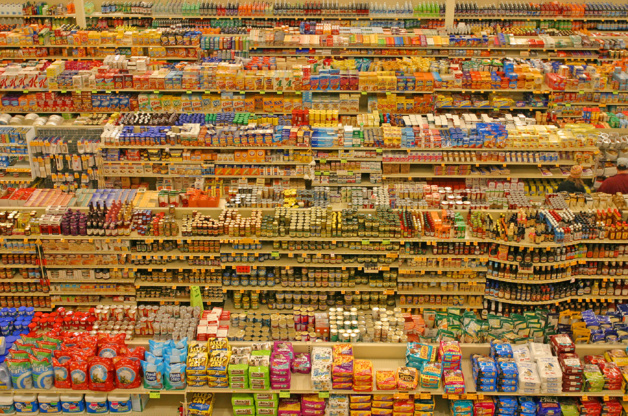
Crédit Lyzadanger/Flickr/CC
A recent study from medical newspaper The Lancet showed that the United Kingdom is one of the only Western countries, along with Iceland and Malta, to display such high rates of obesity. Nearly 67% of men and 57% of women are deemed to be overweight in the UK. Among youth, obesity affects 26% of boys and 29% of girls. This rate has been on the increase for the last 30 years, and it is expected to double by 2050. Until now, no country has managed to find a solution to counteract this phenomenon.
More colours for more clarity
In the United Kingdom, obesity has become the main issue in public health discussions. Therefore, the British Ministry of Health inaugurated a three coloured system, red, orange and green, which aims to help the consumers get to grip with products on the market, compare them, and make the right decisions.
These colours, in the form of dots, are directly stuck onto the label of the product, indicating the quantity of sugar, fats, salt, and calories.
A “simplistic” and paradoxical scheme
Reactions started to multiply throughout Europe. Opponents from European countries or agricultural organisations criticised a system that, according to them, would influence the consumer rather than informing them. Olive oil is given a red dot because its fat rate is higher than 17.5g for 100g, whereas it contains an amazing source of antioxidants and polyphenols, both beneficial for the cardiovascular system, if consumed with caution, and its virtues are acknowledged by the entire scientific community.
In Italy, many people fear that this “simplistic” aspect might be too arbitrary and mislead the consumer instead of making their life easier. For example, light Coke is given a green dot for not containing sugar, but it does contain synthetic sweeteners and a caramel colouring E150d that the WHO has recognised as carcinogenic. These nuances are not considered in the allocation of the dots, and it proves the limits of this scheme.
A late reaction from the EU
Italy is highly opposed to the British coloured labelling, as it may endanger the exportations of their local products such as cheeses, olive oil, and meats. Therefore, the country reported the project to the European Commission more than a year ago. After ensuring that the scheme was not an obstacle to trading as it was not a compulsory measure, the Commission took a second look and recently launched infringement proceedings against the United Kingdom, who will have two months to explain its nutritional code.
Whatever might be the result of this procedure, the fight against obesity is not about the potential maintenance of the coloured system or not, but mostly has to do with the consumers’ education, as much at home as in school, no matter how old they are. The only issue: if you depend on the consumer’s wants, you take the risk that it might not work. In this case, there will be nothing left to do but to invent a new label in the supermarkets.




























